Sitecore Symposium 2024
and the Sitecore MVP Summit & Partner Connect
Two weeks ago, I traveled to Nashville for a week filled with events, networking, catching up with old friends and making new ones, sharing knowledge, and discussing Sitecore’s products, go-to-market strategy, and technical roadmaps. It was one of the best events in years, thanks to some exciting announcements and an exceptionally clear vision for powering digital experiences.
While I can’t reveal much about the MVP Summit other than to say it again was a real privilege to engage with Sitecore’s product owners and leadership team for valuable insights into roadmaps and behind-the-scenes peeks, I am eager to share what I learned at Sitecore’s Symposium, along with my thoughts and reflections on their latest developments.
Sitecore Stream
The biggest news at Symposium undoubtedly was the announcement of Sitecore’s new product, Stream. This brand manager, powered by contextual AI, assists with creating and managing content, personalizing experiences, setting up campaigns, and enhancing the customer experience across all Sitecore products.

Stream is a product that integrates with all Sitecore offerings, not only within their Composable DXP but also with the Sitecore Platform DXP. Essentially, it is an add-on that brings AI capabilities to all Sitecore products you are using. I’m pleased with the perspective they chose: empowering content editors and marketers to work more efficiently, stay aligned with their brand, and expand their knowledge. They clearly de-emphasized the creative aspect of generative artificial intelligence, which I consider a positive approach. Many CMS-related AI examples I’ve seen over the past year focused solely on content generation. Stream focuses on aiding creativity by understanding your brand, plotting out tasks, planning work, simplifying asset retrieval, and suggesting optimizations, whether for text or a component of your website.
This brings me to Stream’s three key capabilities: Brand-aware AI, Generative Copilots & AI-enhanced Workflows.

You can train Stream using your own data, encompassing everything from tone-of-voice to corporate identity and brand strategy. This ensures consistency throughout your marketing materials and content while also enhancing efficiency. As a marketer or content editor, you don’t need to sift through individual documents or a company knowledge base; you can simply consult your Stream Copilot or trust its output. Importantly, Sitecore promises that your data will never be shared with other customers. They have made significant investments to develop a product capable of running customer-specific tenants, ensuring data security. Additionally, you can decide where your data is stored; if you are an international Sitecore customer, you can ensure that your European-based data is stored solely within EU data centers.
This is underscored by the three pillars of Sitecore Stream:
- Smarter: fully integrated with your brand.
- Strategic: beyond merely generating content, Stream aids in setting up campaigns and workflows, as well as strategizing, ideating, conducting research, and brainstorming – all while aligning with your business goals.
- Secure: your content is not used to train a generic model; training is exclusively based on your own content and remains within your tenant.
This promise is crucial for building trust, which is especially important in this new age of AI. By default, Stream uses Microsoft’s Azure OpenAI Service, but you also have the option to integrate your own AI or LLM.
A demo
I attended a demo of Stream at the Sitecore booth in the Solutions Pavilion at Symposium. The Stream Portal serves as the starting point for orchestrating any interaction. It provides an overview of brand kits, features a brand assistant (Copilot) for chatting, and includes a brief builder to help set up briefings for new marketing campaigns. The system assists in defining deliverables, identifying related assets, setting campaign goals, understanding the audience, and suggesting AI-driven tasks to build and execute the campaign.
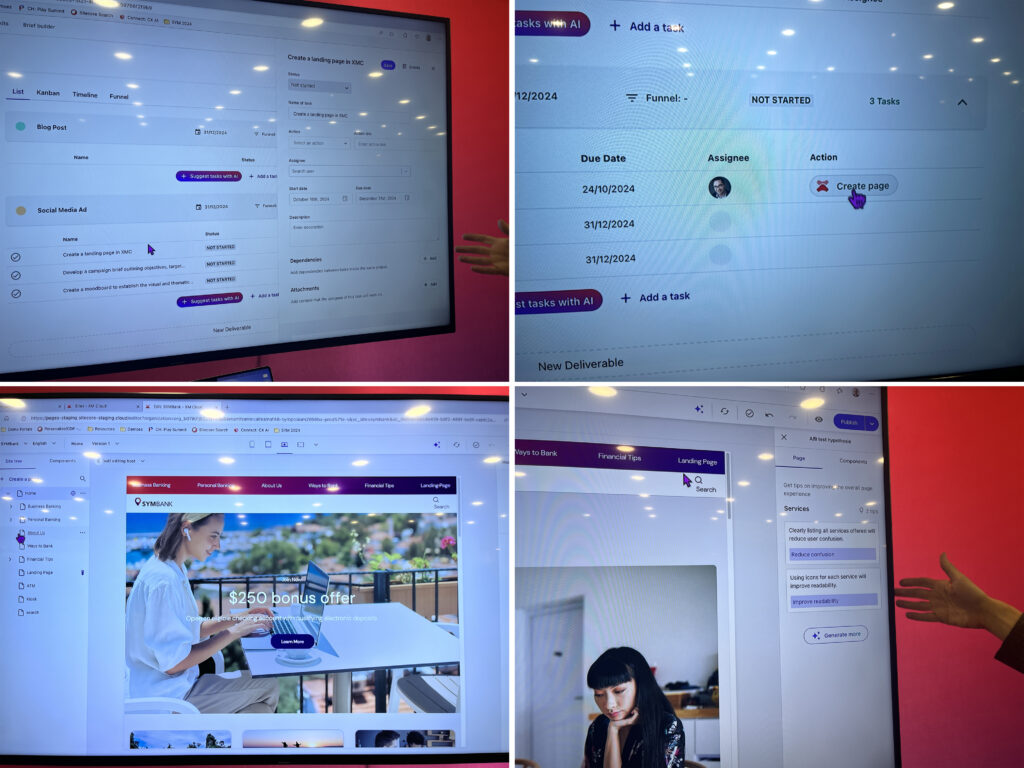
If Stream suggests setting up a landing page in XM Cloud, it not only proposes and details the task, but also allows you to jump directly to XM Cloud and create the page collaboratively. You can select a layout, with AI suggesting a title and text based on the intent you provided. Stream then offers optimization suggestions for your content and specific components on the page. It allows you to generate hypotheses to get concrete suggestions for reducing confusion about a product or offering, improving content readability, or addressing other optimization needs. For me, the most impressive feature was Stream’s ability to suggest an A/B or multivariate test in XM Cloud to validate the proposed optimizations.
I think this is AI done right. It helps you with your daily work, making it more fun, easier, and hands you the tools and information you need, without getting in your way on the creative aspect of it.
Another example of Stream’s capabilities is within the Content Hub DAM. While the current search relies on keywords, Stream enhances this by enabling searches based on the meta aspects of images not captured by keywords. You can request it to find images in a specific style or mood, or use an image as input to find complementary visuals. This truly adds a new dimension to content management. As you can see, the product is already functional, demonstrating its potential even though it hasn’t been officially released yet. I am excited to start working with it!
Developer experience (XMC)
Another important focus at this Symposium was on enhancing the overall developer experience with Sitecore products. Sitecore is now concentrating on simplifying products and frameworks like JSS, improving documentation across all offerings, and providing more examples and boilerplates to guide implementations. This approach aims to facilitate building on Sitecore products in a more standardized way, leading to better maintainability and efficiency. Additionally, they plan to introduce improved compatibility with frameworks other than Next.js for the headless offering of XM Cloud, creating more freedom of choice to work with frontend frameworks like Angular, Astro, Nuxt and even Go.
For JSS they are looking into introducing semantic versioning, removing XM only concepts, and removing Experience Editor support (Pages should offer all capabilities and the overall architecture can then be simplified). They also want to achieve true framework agnosticism by removing reliance on framework specific rendering requirements and moving concepts out of the Next.js package.
They also want to offer leaner and more modern starter kits, making upgrades easier, offering separate packages for different services, rationalizing Sitecore Contexts, and improving the plugin architecture. These starter kits should offer “an example of how to utilize the GraphQL utilities, set up dynamic routing, recursively render layout and utilize the component discovery service.“
Another area for improvement in XM Cloud is extensibility. I believe this is crucial for fitting well within the composable landscape where Sitecore positions its DXP. To meet this need, Sitecore is introducing the Sitecore Marketplace. I will zoom in on that in the next paragraph. For a more in-depth look at all of the upcoming improvements for XM Cloud, see the following roadmap:
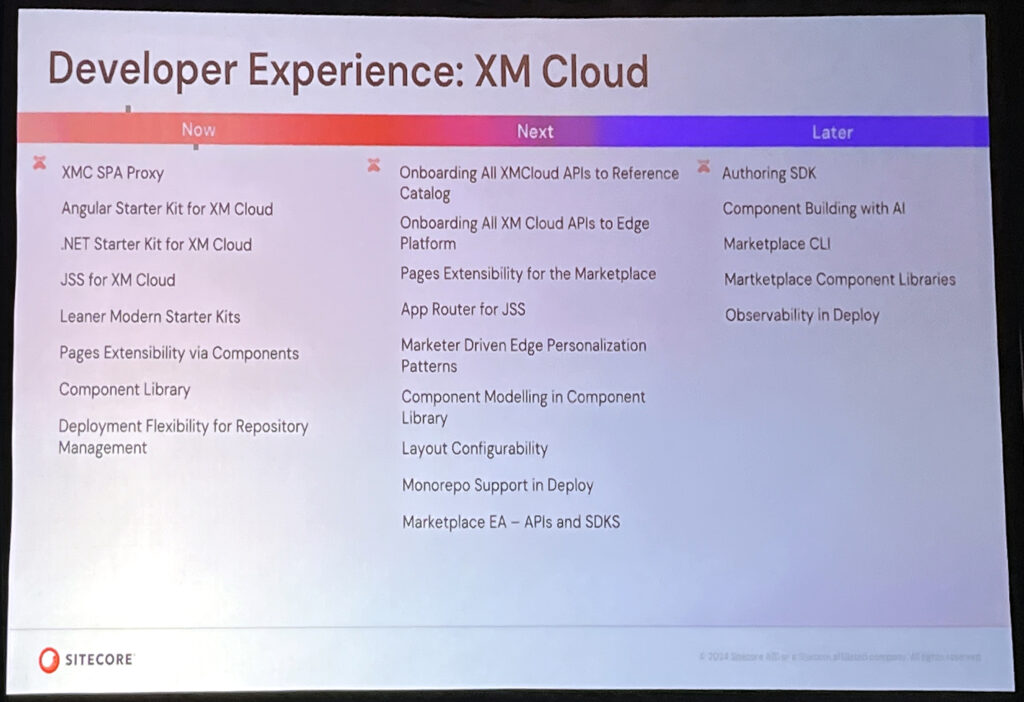
Sitecore Marketplace
As I mentioned, Sitecore is set to launch a new concept to enhance the extensibility of their products: the Marketplace. This is a welcome development that aligns well with their Composable proposition and SaaS philosophy. XM Cloud, as a SaaS product, benefits from limiting implementation-specific customizations to maintain its sustainability, yet it still should allow for specific integrations and extensions to meet particular needs. This is where the Marketplace comes into play. It enables you to build and share your own solutions as building blocks or add-ons while encouraging Sitecore to design their products for extensibility. This approach requires opening up APIs, ensuring compatibility, and providing thorough documentation on integrations, without necessitating Sitecore to support third-party implementations or customizations.
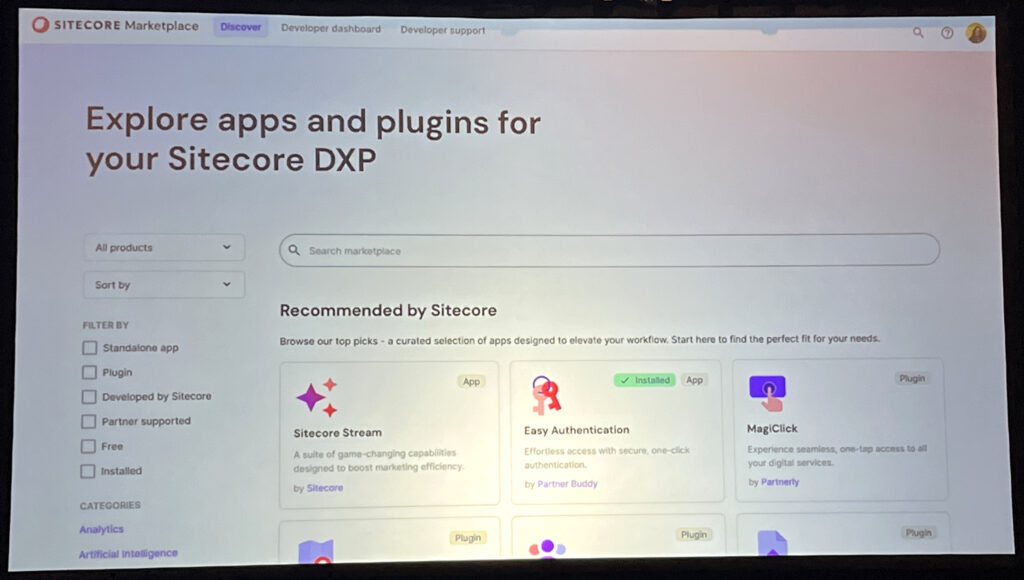
One of the great features of the Marketplace is the ability to publish your apps or plugins either privately or publicly. This functionality not only allows you to share your work with the community and offer extensions commercially (paywalls are allowed), but also enables the distribution of reusable components or implementations within your own organization. This versatility makes it a powerful and diverse mechanism supporting reusability.
The Marketplace facilitates discovery for apps and plugins and offers straightforward installation: you simply select the XM Cloud environments for installation, and from there, it’s just a matter of “next-next-finish”. Some good examples include integrations with other Digital Asset Management systems like DAMLY, or third-party translation services for example. This ecosystem brings Sitecore’s products and the community closer together, making it easier to contribute and even allowing Sitecore to distribute specific add-ons themselves.
Initially, the Marketplace is targeted specifically at XM Cloud, but eventually, it will be extended to all Sitecore SaaS products. They shared the following roadmap for the Sitecore Marketplace:
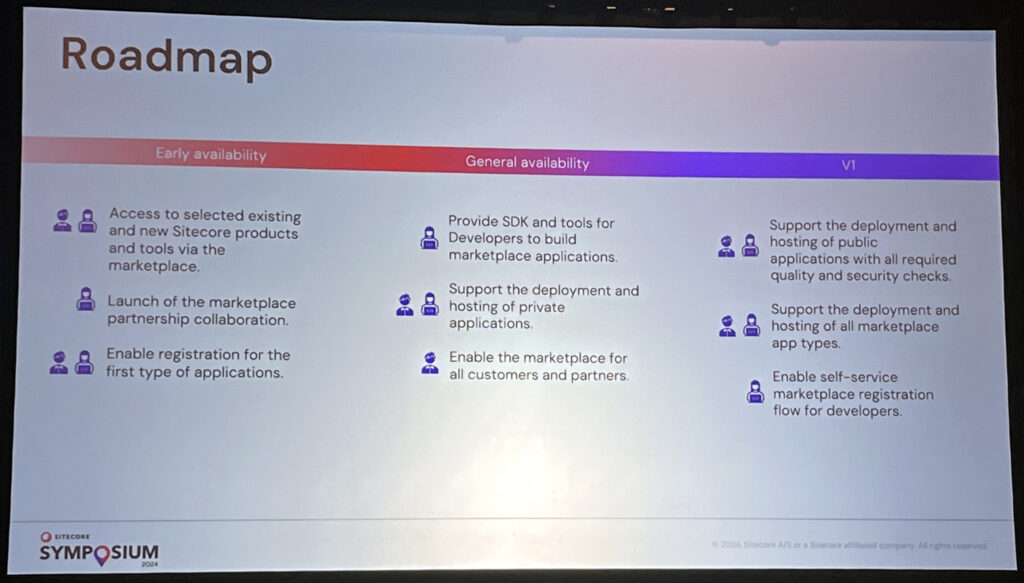
Publishing v.2
Other exciting news on Symposium centered on the evolution of Edge Runtime Publishing through a new and improved process. This (experimental) feature significantly enhances performance, particularly for incremental publishing. Currently, we sometimes face slow publishing times in XM Cloud, especially with shared data sources, due to full caching of all content, including personalization variants. This triggers a cascade of publishing events that clog the queue. The new process, dubbed v.2, addresses this by publishing individual data sources and partially resolving layouts at runtime, resulting in a general 5% speed increase. For incremental or shared data source publishing, improvements range from 100% to over 1000% faster. The penalty of this is though that the initial response is twice as slow, but you could solve this by building a custom warmup script triggered by the publish webhook.
With the new system, updates to a small number of content items on a content-heavy site, especially those with language fallbacks, reduce publishing times dramatically, from hours to less than 30 seconds. This new publishing option has been available in beta since April and can be enabled via a configuration setting due to the fact that you have to use it consciously given the slower initial response. For more detailed information, see the relevant changelog item:
https://developers.sitecore.com/changelog/xm-cloud/18042024/faster-publishing-in-xm-cloud
At Symposium, Sitecore did announce that the new v.2 publishing will be Generally Available (GA) soon – though it will still require a configuration change and won’t be enabled by default.
My talk: building resilient integrations with XM Cloud
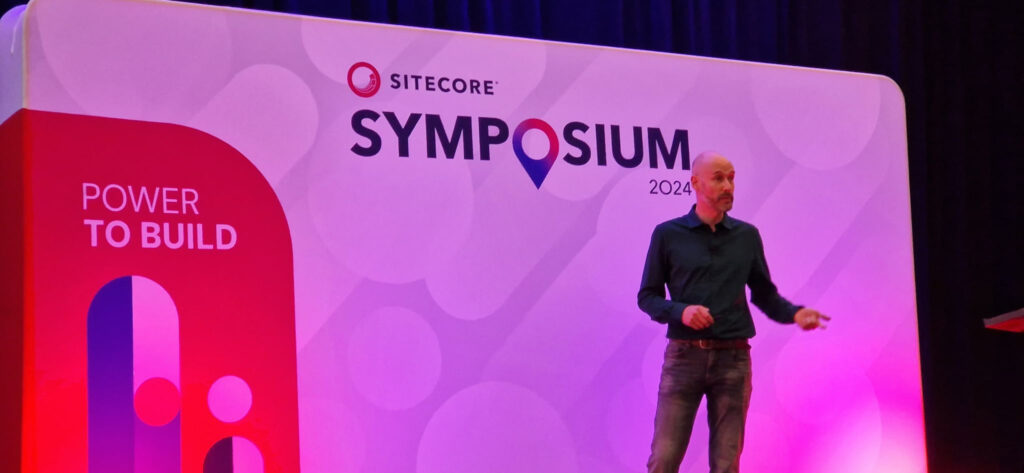
I also had the honor of speaking again at this amazing event. I discussed transitioning from old habits in the Platform DXP to implementing strong and resilient integrations for complex web applications with XM Cloud in a truly Composable MACH-based architecture. I covered approaches to such integrations, the APIs and methodologies available, and considerations necessary for designing these implementations. There are important differences to stand-alone monolithic applications concerning dependencies on SaaS software, publishing patterns, and integration points that are critical when building such applications. My talk was well-received and led to some great conversations afterward, earning both compliments and valuable feedback. This was an awesome end to a fantastic event. The community is thriving, and Sitecore’s vision is strong. I eagerly anticipate the new developments and product improvements in the coming months!
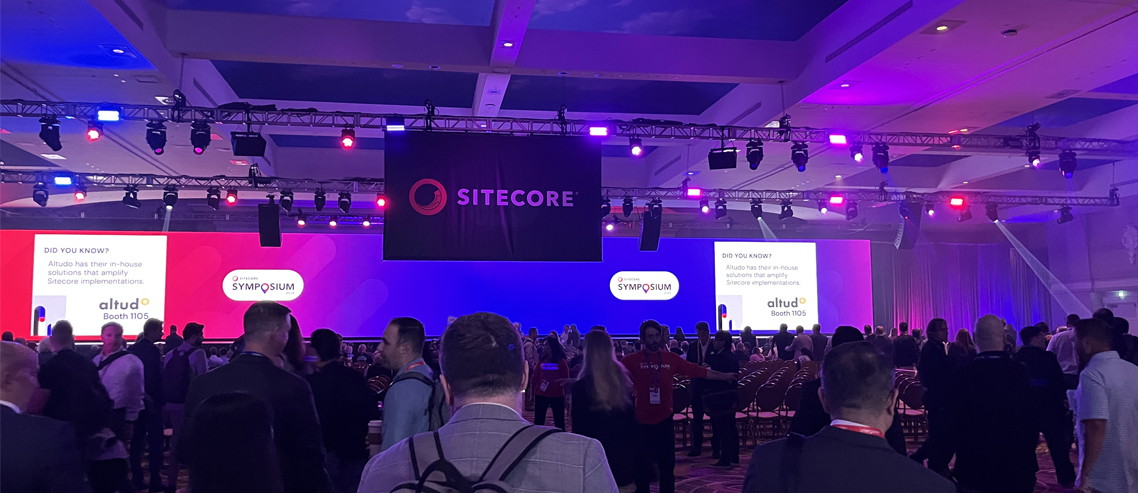
Comments
Leave a Comment